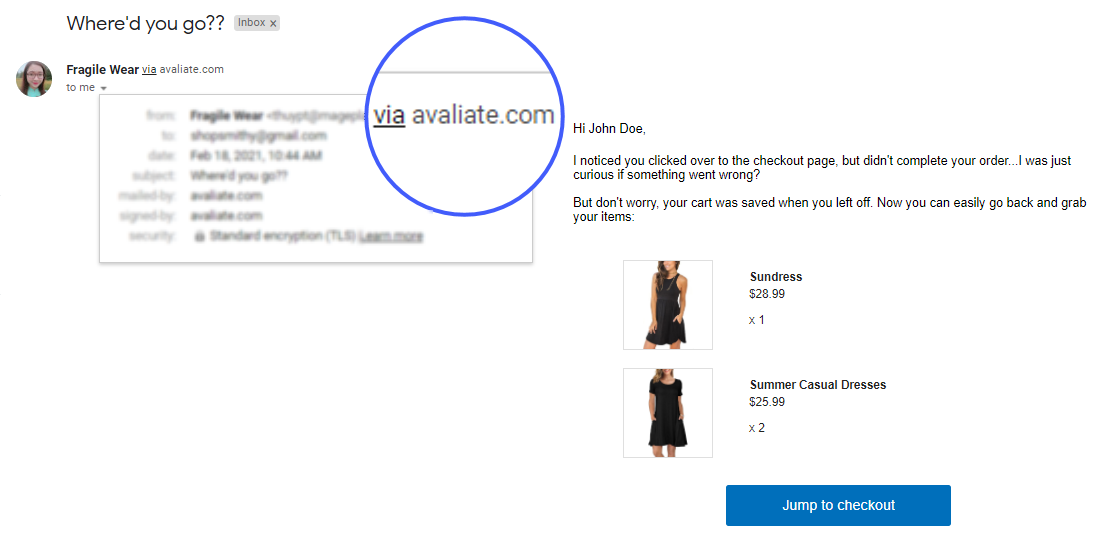Why Should You Verify Your Sending Domain?
Sender reputation is one of the most important factors that decide your email deliverability whether it lands to customer inbox, promotion or spam, or even bounce. To provide AVADA users with the flexibility to add authorized senders, we offer three ways below:
- You can use your sender under our verified domain
- You can verify your domain and add a sender belong to it (Guide)
- You can set up a custom SMTP sender if you are using SMTP service to send email (Guide)
In this article, we will talk mostly about number 1 and 2 - which is also known as using a Shared Sending Domain and A Dedicated Sending Domain respectively.
Shared sending domain
With a shared domain, I am talking about the first way to add your sender under AVADA domain. This is a shared sending domain because it includes a base domain that is used among many AVADA accounts. We provide a pre-verified domain for different users if you do not have a business account or you cannot verify your own domain. Let’s explore more about the merits and demerits of this domain type in sending your marketing emails.
Advantages
It is simple to add a sender. You do not need to add DKIM, SPF and Bounce records to your DNS settings to verify your domain. Just verify your email in minutes and you can start sending immediately in AVADA.
Secondly, since a shared domain is used to send a large number of emails from different accounts, the domain reputation is high and you will benefit from it.
Disadvantages

First, there will be an AVADA email address attached with your email sender when customers receive your message (see image above). This is, for deliverability, have no bad effect. But for brand credibility, it seems confuses for your audiences.
Secondly, since it is a shared domain, your email reputation is also affected by other sender accounts. So it has a risk level when using AVADA shared domain to send your emails.
Dedicated sending domain
It is simply using the root domain of your business, instead of an AVADA domain to send email. Domain verified lets email providers (such as Gmail, Yahoo, etc.) know that AVADA has your permission to send emails on your behalf. To give AVADA this permission, you need to connect DNS records from your DNS provider (like GoDaddy, Rackspace, or Cloudflare) to AVADA.
Benefits
Compare to a shared domain, it is obvious that only one sender (it’s your business sender) has an impact on the reputation. So you can entirely decide and manage your email deliverability.
Also, your email sent out will not include “via @avada.io” at the sender. This makes your message look more branding and professional in your customers’ eyes.
Negatives
Since it is likely the first time you send emails by your verified domain, you must slowly warm the sending domain by sending a small email number then increase through time.
Plus, you must update your DNS records - which required more steps and access to your DNS settings. See guide here.
Final words
In short, using your dedicated sending domain is still a preferred way for a long-term use. It only takes time when you first set up the DNS records, then you confidently send your emails and have full control of your sender reputation.
New Posts

How To Set Up Google Analytics 4 For Your BigCommerce Store






